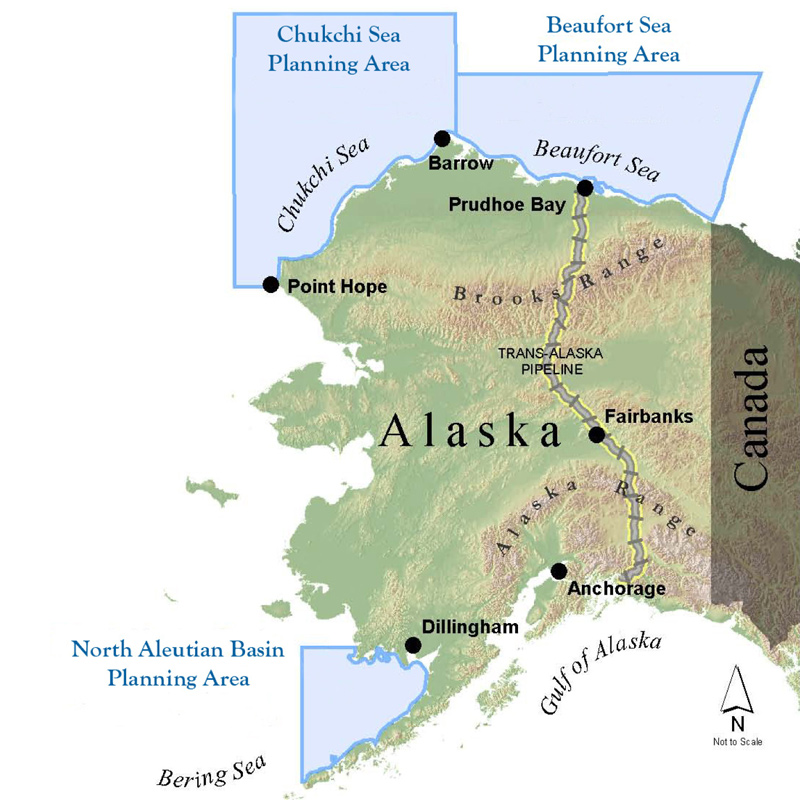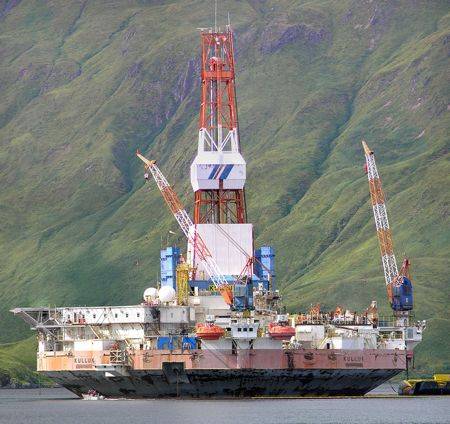President Obama ‘turning his back on the livelihoods of Alaskans who depend on resource development’
Today, the United States Department of the Interior and the Bureau of Ocean Energy Management released 348 pages of new Requirements for Exploratory Drilling on the Arctic Outer Continental Shelf.
Today’s rule addresses certain key factors associated with conducting offshore oil and gas activities on the Arctic Outer Continental Shelf, specifically adding regulations for the Beaufort Sea and Chukchi Sea Planning Areas.
According to the BOEM executive summary:
“Although there is currently a comprehensive OCS oil and gas regulatory program, there is a need for new and revised Arctic-specific regulatory measures for exploratory drilling conducted by floating drilling vessels and “jack-up rigs” (collectively known as mobile offshore drilling units or (MODU)) in the Beaufort Sea and Chukchi Sea Planning Areas (defined in this final rule as the Arctic OCS).
“The United States (U.S.) Arctic region, as recognized and defined in the U.S. Arctic Research and Policy Act of 1984, as amended, encompasses an extensive marine and terrestrial area; however, this final rule focuses solely on the OCS within the Beaufort Sea and Chukchi Sea Planning Areas.
“This final rule adds to and revises existing regulations in 30 CFR Parts 250, 254, and 550 for Arctic OCS oil and gas activities and focuses on exploratory drilling activities that use MODUs and related operations during the Arctic OCS open-water drilling season.
“The final rule does not preclude exploratory drilling on the Arctic OCS conducted in the future using other drilling technologies (e.g., use of a land rig on grounded or land-fast ice). Exploratory drilling operations using technologies other than MODUs are outside the scope of the final rule and would be evaluated under the existing 5 OCS oil and gas regulatory program, as may be amended.
“The final regulations address a number of important issues and objectives, including ensuring that each operator:
- Designs and conducts exploration programs in a manner that accounts for Arctic OCS conditions;
- Develops an integrated operations plan (IOP) that addresses all phases of its proposed Arctic OCS exploration program, and submits the IOP to BOEM at least 90 days in advance of filing its Exploration Plan (EP);
- Has access to, and the ability to promptly deploy, Source Control and Containment Equipment (SCCE) while drilling below, or working below, the surface casing;
- Has access to a separate relief rig located in a geographic position to be able to timely drill a relief well under the conditions expected at the site in the event of a loss of well control;
- Has the capability to predict, track, report, and respond to ice conditions and adverse weather events;
- Effectively manages and oversees contractors; and,
- Develops and implements an Oil Spill Response Plan (OSRP) that is designed and executed in a manner that accounts for the unique Arctic OCS operating environment, and has the necessary equipment, training, and personnel for oil spill response on the Arctic OCS.
Industry and State of Alaska React to Today’s Rule
Commenting on the new rule, the Arctic Energy Center, a joint venture of the Alaska Oil and Gas Association and IPAA, issued a statement:
“By adding to the exhaustive regulations already in place, the new Arctic drilling rules released today will further restrict industry’s options, deter investment in the region and diminish the economic potential of the Arctic.
“After enforcing burdensome regulations that have already crippled development and having canceled Arctic lease sales originally scheduled for 2016 and 2017, the Obama Administration has once again demonstrated a troubling readiness to turn its back on Alaskans, whose livelihoods depend on resource development, and all Americans, whose safety and security hinge on a robust domestic energy base.”
Alaska Governor Bill Walker issued the following statement today:
“We will look very carefully at the regulatory package to understand the implications for companies interested in exploring in the Arctic. One risk profile does not fit all projects. Flexibility is necessary to accommodate different types of programs. After the time the Interior Department has spent on this regulatory package, I hope the administration moves to expedite Chukchi and Beaufort lease sales.”
Recent Drilling History in Chukchi Sea
Last September, Royal Dutch Shell (ticker: RDS.A) announced it was pulling out of its Chukchi Sea exploration project, putting an end to its operations offshore Alaska. The news came following results from the company’s Burger J exploration well, which was drilled to a total depth of 6,800 feet. While the company did find indications of oil and gas at the well, “these are not sufficient to warrant further exploration in the Burger prospect. The well will be sealed and abandoned,” Shell said.
Shell said it would cease further exploration activity in offshore Alaska for the foreseeable future, citing the Burger J well result, the high costs associated with the project, and “the challenging and unpredictable federal regulatory environment in offshore Alaska.”
Shell said it would take a $4.1 billion write down for the project in addition to the $7 billion it had invested in the Arctic up to this point, including $2.1 billion to acquire its license in the Chukchi Sea, where Burger J was located.
At least four other companies have given up offshore leases in the region, including ConocoPhillips (ticker: COP), Statoil (ticker: STO) , ENI (ticker: E) and Repsol (ticker: REP).



